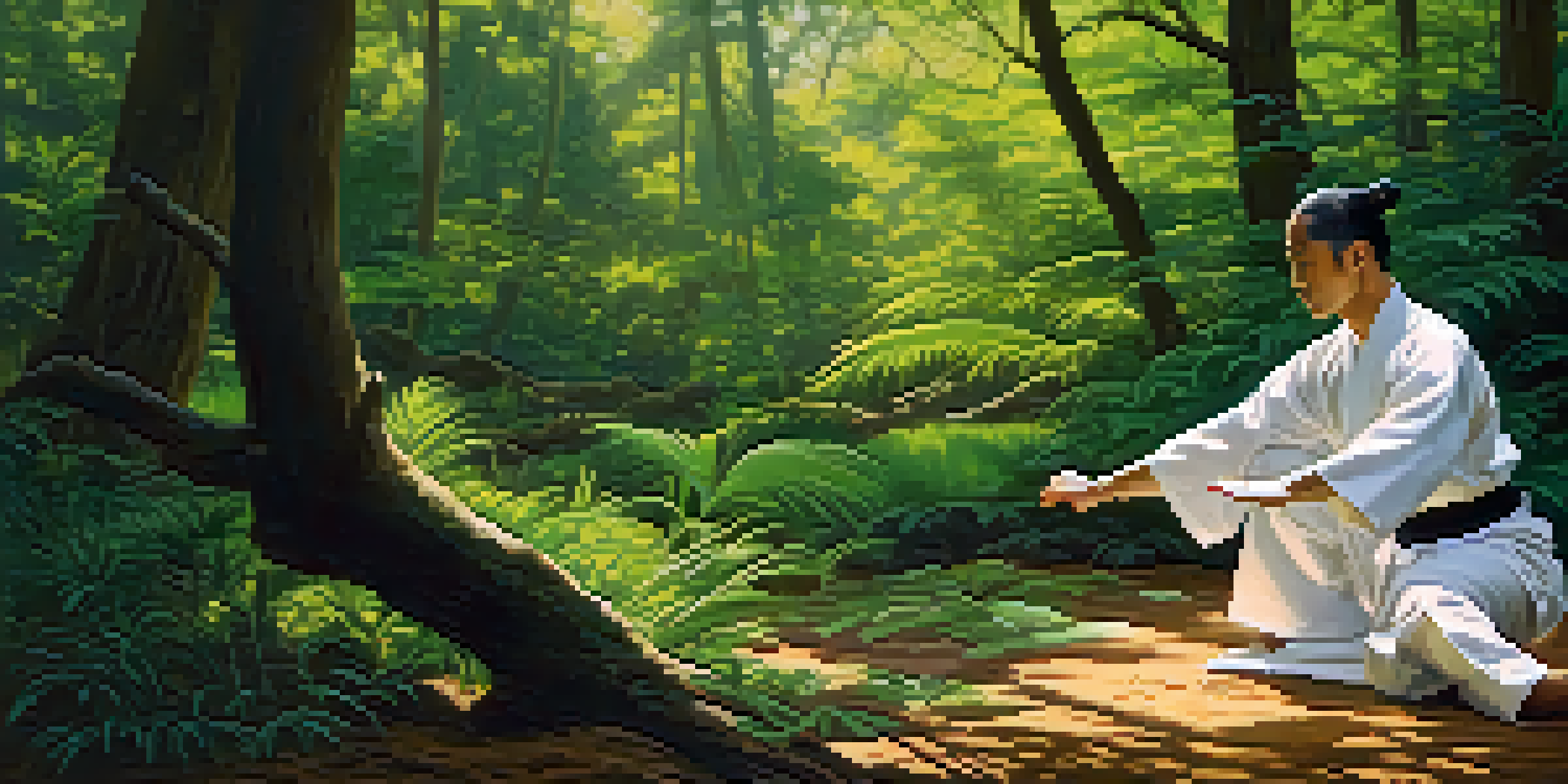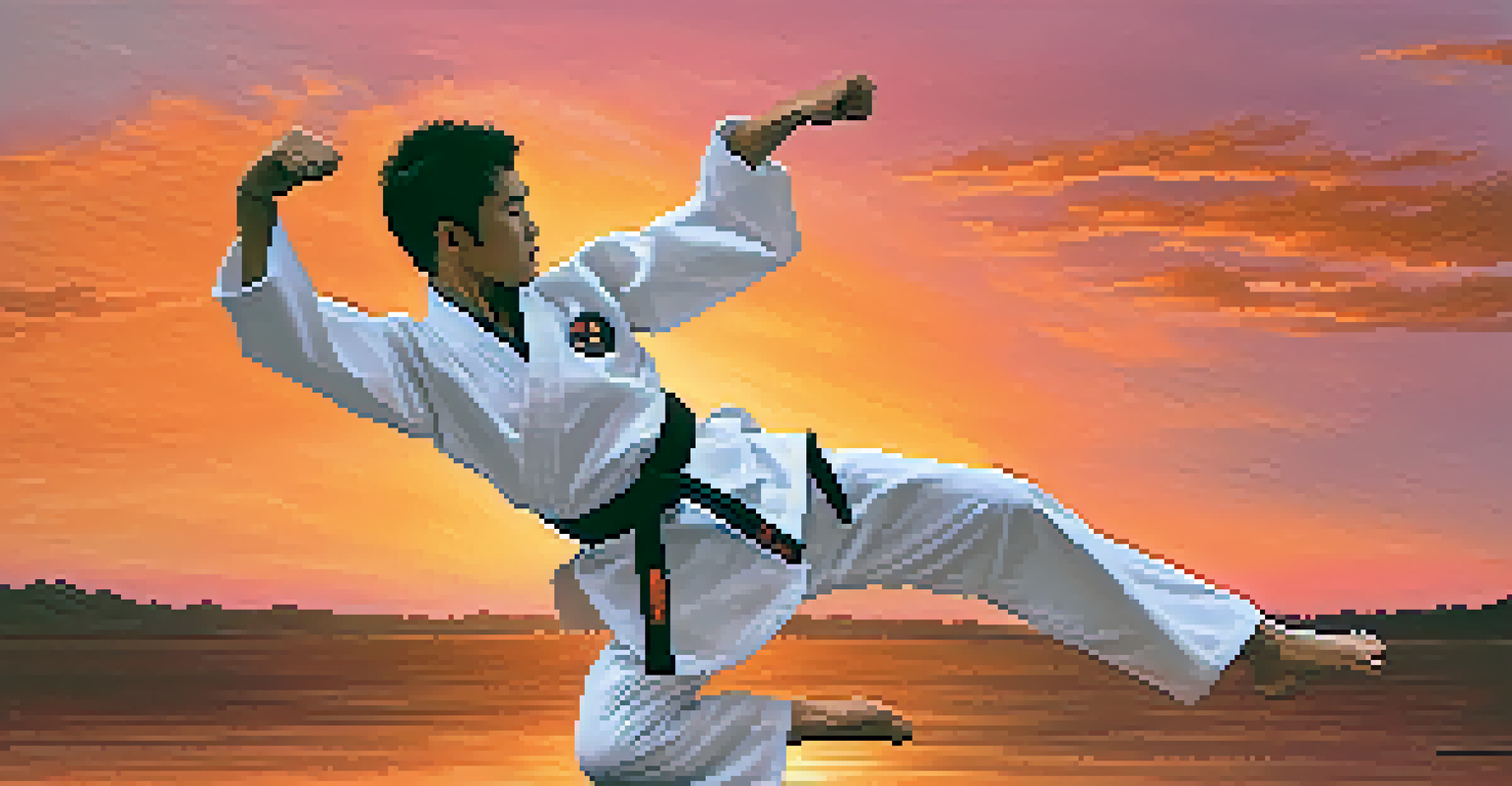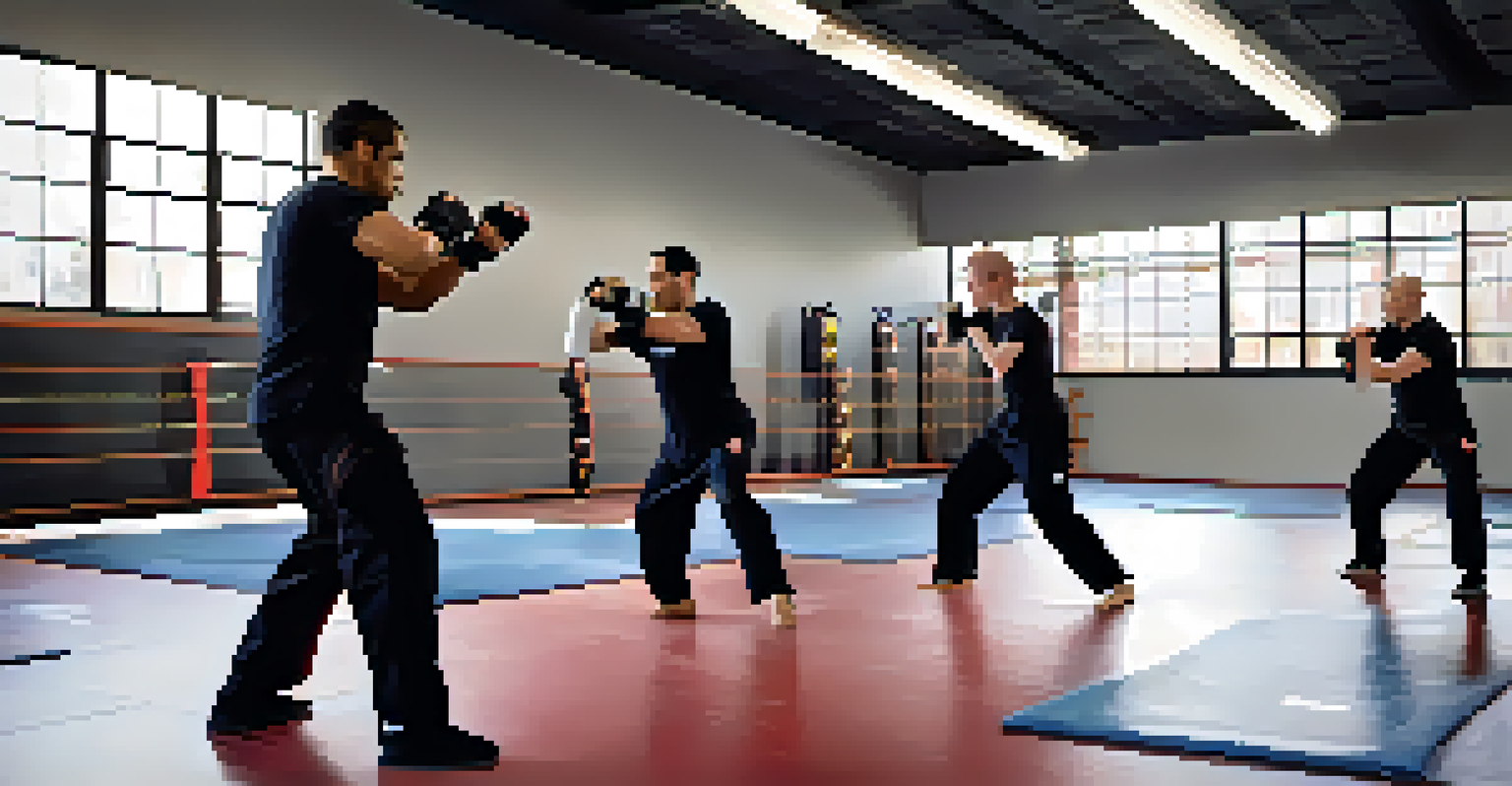Exploring Self Defense Techniques in Asian Cultures

The Historical Roots of Asian Self Defense Techniques
Self-defense techniques in Asian cultures are deeply rooted in history, often tied to the martial traditions of their respective regions. For instance, Chinese martial arts, known as Kung Fu, have evolved over thousands of years, influenced by philosophy, religion, and the need for protection. These practices were not just about combat; they were also about discipline, respect, and spiritual growth.
The ultimate aim of martial arts is not having to use them.
In Japan, the development of Judo and Aikido reflects a similar blend of martial skill and ethical principles. Judo, created by Jigoro Kano, emphasizes using an opponent's force against them, embodying the idea that strength isn't always physical. This philosophy resonates through many Asian self-defense practices, which prioritize strategy and mental acuity over brute strength.
These historical contexts are crucial to understanding how self-defense techniques were shaped by cultural values and societal needs. From the Shaolin monks' spiritual training to the samurai's code of honor, each technique tells a story of resilience and adaptation, making them not just physical skills but cultural treasures.
Kung Fu: The Art of Combat and Philosophy
Kung Fu, also known as Wushu, is a term that encompasses a vast array of martial arts styles originating from China. It combines physical prowess with philosophical teachings, emphasizing balance, flexibility, and mental focus. Practitioners often learn both forms (patterns) and sparring, which enhances their ability to defend themselves while fostering personal growth.

One of the unique aspects of Kung Fu is its connection to various animal styles, such as Tiger, Crane, and Snake. Each style imitates the movement and characteristics of these animals, offering practitioners a diverse toolkit for self-defense. This approach not only makes training engaging but also helps develop adaptability in real-life situations.
Cultural Roots of Martial Arts
Asian self-defense techniques are deeply influenced by historical and cultural values, blending combat skills with ethical principles.
Moreover, Kung Fu training often includes meditation and breathing exercises, which cultivate mindfulness and emotional regulation. This holistic approach is what sets Kung Fu apart, allowing practitioners to defend themselves effectively while also nurturing a deeper understanding of their own capabilities.
Karate: The Way of the Empty Hand
Karate, which translates to 'empty hand,' is a striking art that originated in Okinawa, Japan. It emphasizes powerful punches, kicks, and knee strikes, with a focus on speed and precision. Unlike other martial arts that may include grappling, Karate practitioners prioritize striking techniques, making it an effective self-defense method.
Self-defense is not just about physical skills; it's about developing the mindset to handle conflict peacefully.
The training process in Karate often involves practicing katas, which are pre-arranged forms that simulate combat against imaginary opponents. This practice helps develop muscle memory and technique while also instilling discipline and respect for one’s opponents. The rigorous training helps build physical strength and mental resilience, essential for effective self-defense.
Karate also incorporates a philosophical aspect, teaching respect, humility, and perseverance. These values help practitioners navigate conflicts not just physically, but also mentally and emotionally, encouraging them to seek peaceful resolutions whenever possible.
Taekwondo: The Korean Way of Kicking
Taekwondo is a dynamic martial art from Korea known for its high, fast kicks and jumping techniques. It emphasizes agility and footwork, making it a visually impressive and effective self-defense option. The sport has gained international popularity and is even included in the Olympic Games, showcasing its global appeal.
Training in Taekwondo focuses on developing strength, flexibility, and coordination. Practitioners learn to execute powerful kicks and strikes, often using their legs as the primary weapon. The emphasis on kicking techniques allows individuals to defend themselves from a distance, which can be advantageous in a confrontation.
Philosophy in Training
Many martial arts emphasize personal growth and character development as essential components of their practice.
Alongside physical training, Taekwondo promotes mental discipline and respect for others. Belts signify progression, encouraging practitioners to set and achieve personal goals. This structured approach, combined with its practical applications, makes Taekwondo an attractive choice for self-defense enthusiasts.
Krav Maga: The Modern Self Defense System
Though not traditional in the same sense as other Asian martial arts, Krav Maga is an effective self-defense system developed in Israel. It draws on techniques from various martial arts, focusing on practical, real-world scenarios. Krav Maga prioritizes quick, efficient responses to threats, making it highly relevant in today's context.
What sets Krav Maga apart is its emphasis on instinctive movements and adaptability. Practitioners learn to defend against armed and unarmed attackers, using their environment to gain an advantage. This approach makes it a popular choice for individuals looking to enhance their personal safety in unpredictable situations.
Moreover, Krav Maga training includes mental conditioning, teaching participants to stay calm under pressure. This psychological aspect is crucial for effective self-defense, as it empowers individuals to respond decisively in high-stress situations, reinforcing the importance of awareness and preparedness.
Muay Thai: The Art of Eight Limbs
Originating from Thailand, Muay Thai is often referred to as 'The Art of Eight Limbs' due to its use of punches, kicks, elbows, and knees. This striking art is known for its effectiveness in self-defense, combining power with conditioning to prepare practitioners for real-life encounters. The rigorous training regimen builds not only physical strength but also mental toughness.
In Muay Thai, training typically involves sparring and pad work, allowing practitioners to apply techniques in dynamic environments. This hands-on approach builds confidence and helps individuals learn how to respond to attacks efficiently. The sport's emphasis on clinching also teaches practitioners to control opponents in close quarters, further enhancing their self-defense capabilities.
Global Popularity and Adaptation
Traditional Asian martial arts are gaining worldwide recognition, evolving to meet contemporary self-defense needs while preserving their cultural heritage.
Beyond the physical aspects, Muay Thai is steeped in tradition, with rituals and respect for the sport's history being integral to training. These cultural elements cultivate a sense of community among practitioners, emphasizing the importance of respect and honor in both training and competition.
The Role of Philosophy in Self Defense Techniques
A common thread among various Asian self-defense techniques is their underlying philosophy, which often emphasizes respect, discipline, and self-improvement. Many martial arts teach that the ultimate goal is not to engage in combat but to cultivate one's character and resolve conflicts peacefully. This philosophical foundation shapes not only how techniques are executed but also how practitioners view themselves and others.
For instance, concepts like 'Yin and Yang' in Chinese martial arts highlight the balance of opposing forces, encouraging practitioners to understand their own strengths and weaknesses. Similarly, the notion of 'Do' in Japanese martial arts signifies a path or way, pointing to the lifelong journey of mastering oneself through training and practice.

Incorporating these philosophical elements helps practitioners develop a deeper connection to their training. It encourages them to approach self-defense not just as a physical skill but as a means of personal growth, fostering resilience, empathy, and a broader understanding of the human experience.
Modern Adaptations and Popularity of Asian Self Defense
In recent years, many Asian self-defense techniques have gained global popularity, adapting to contemporary needs while retaining their cultural essence. As awareness of personal safety grows, more individuals are turning to these martial arts for self-defense training. This surge in interest has led to the establishment of schools and classes worldwide, making these practices more accessible than ever.
Moreover, social media and online platforms have played a significant role in promoting these techniques, allowing enthusiasts to share their experiences and learn from one another. Videos showcasing martial arts demonstrations and tutorials have inspired many to explore self-defense as a means of empowerment and personal development.
As people from diverse backgrounds engage with these traditional practices, there's a growing appreciation for their cultural significance. This blending of ancient techniques with modern contexts not only preserves the rich heritage of self-defense arts but also ensures their relevance in today's fast-paced world.